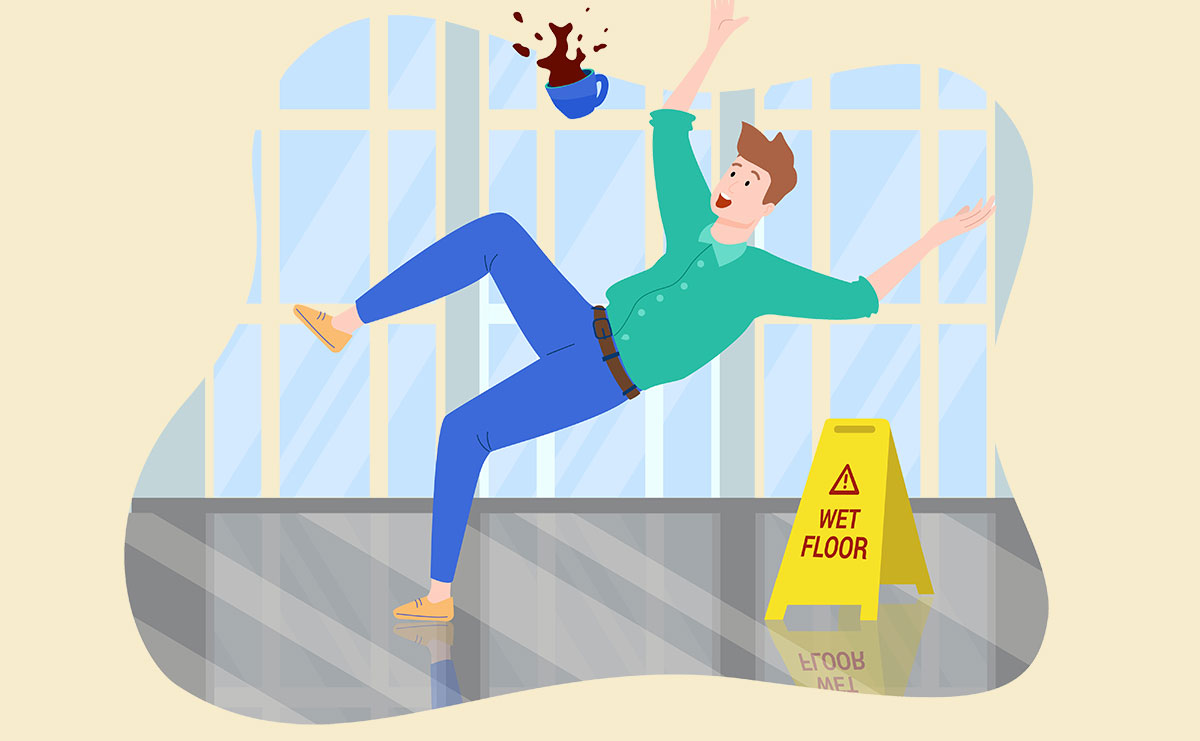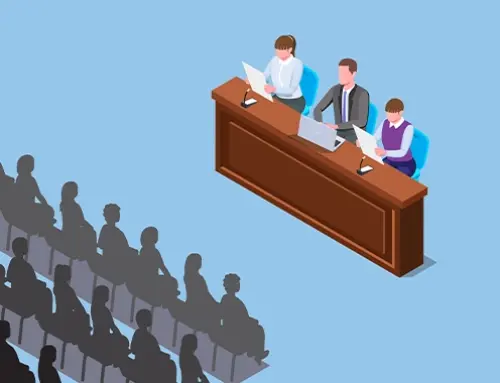Contents
9 Common Misconceptions about Personal Injury Law
Personal injury law is a huge area of focus that assists people in getting compensation when they have been injured by someone else or hurt. Nevertheless, there is a great deal of myths and misconceptions when it comes to this legal practice that fosters ambiguity. Understanding the personal injury claim process can be crucial to ensuring that you receive fair compensation for your injuries. This article will debunk nine of the most common myths about personal injury law.
Misconception 1: Personal Injury Lawsuits Are Always Frivolous
Personal injury suits are not frivolous in the least; they represent real damages caused by another party’s error or inappropriate behavior. One of the reasons for this misconception is how the media has shown a couple of outlier cases and made them look like most personal injury claims. Many personal injury claims are for individuals who have been injured physically, psychologically, or financially so severely that it affects their ability to live healthily. These may be catastrophic injuries from horrible car accidents and long-term disabilities that were the result of medical malpractice or a defective product. A personal injury lawsuit is meant to help you get adequate compensation for these types of losses, such as the cost of medical bills and lost wages, as well as non-economic damages like pain and suffering.
In addition, there are safeguards in the legal system to prevent frivolous lawsuits from proceeding. Judges could strike baseless cases early, and the attorneys bringing them would face penalties. Moreover, a significant number of injury lawyers handle their cases on the principle of no win-no fees. This financial arrangement obviously would serve to deter lawyers from accepting meritless cases.
When it comes to personal injury cases, this is typically viewed as a last-ditch option when individuals are unable to resolve complaints through other channels. For most, it is not only the desire to get compensation from a lawsuit but also to see those responsible brought to justice and hopefully prevent further harm to others. This perspective underlines the social utility of personal injury law as a means for inculcating norms of safety and precaution within society.
Misconception 2: You Can Only File a Personal Injury Claim for Severe Injuries
Personal injury law is designed to protect individuals who have been harmed due to someone else’s negligence, regardless of the severity of the injury. The common misconception that personal injury claims are only valid for severe injuries overlooks the fact that even minor injuries can have significant impacts on a person’s life and finances.
Personal injury law covers a broad spectrum of injuries, ranging from minor bruises or sprains to life-altering conditions. The key factor in a personal injury claim is not the severity of the injury itself but the presence of negligence and the effect of the injury on the victim’s life. For instance, a minor injury that results in chronic pain, missed work, or the need for ongoing medical treatment may warrant compensation. Even injuries that seem minor at first can sometimes lead to long-term complications or require substantial medical expenses, justifying the need for legal action.
Another important aspect to consider is that some injuries may have delayed symptoms. For example, a person involved in a car accident might not immediately feel the full extent of their injuries, such as whiplash or concussions, which can manifest days or even weeks later. In such cases, even if the initial injury seems minor, the long-term impact can be significant, making a personal injury claim appropriate.
Personal injury claims can also address non-physical damages, such as emotional distress or psychological trauma, which might not be immediately visible but can have a profound effect on the victim’s well-being. For example, a person might suffer from anxiety or depression after an accident, even if their physical injuries were minor.
Filing a personal injury claim is about ensuring that victims are fairly compensated for all the ways an injury has affected their lives, whether those effects are physical, emotional, or financial. By covering a wide range of injuries, personal injury law helps ensure that all victims have access to justice and the compensation they need to recover and move forward with their lives.
Misconception 3: You Will Get Rich from a Personal Injury Lawsuit
One big myth about personal injury lawsuits is that they are a fast lane to riches. The focus of a personal injury settlement or judgment should be to make the victim “whole” again, not to award them with a financial windfall. Compensation in personal injury cases is meant to be restorative, awarding actual damages and losses due to the injury rather than acting as a way to profit from an accident.
Personal injury claims usually include a request for damages related to specific, ascertainable losses like medical expenses, lost wages, general pain and suffering, property damage, and other costs like out-of-pocket expenses for travel or other things you’ve had to spend because of the accident. The goal of a personal injury lawsuit is to provide victims with the financial resources needed to pay for these losses and resume where they were before their injuries. It is about restoring the life of that person as much as possible, not making them richer.
Of course, many variables determine the figure that a plaintiff will receive at settlement—such as whether an injury is minor or severe, how convincingly fault and damages can be proven through evidence, and the availability of insurance compensating for medical treatment. The legal process is also time-consuming and can be complicated, with no promise of a substantial award in the end. This includes the fact that so-called lawsuits “getting rich” fail to take into account legal fees and court costs, which can eat up a substantial portion of funds awarded to victims.
Misconception 4: If You Were Partially at Fault, You Cannot Recover Damages
It is a common misconception that you cannot recover damages if you are partially at fault for an accident. A legal principle known as comparative negligence allows individuals to recover damages even if they were partially responsible for the incident. However, the compensation you receive may be adjusted based on your percentage of fault.
Comparative negligence is a legal doctrine used to allocate fault between the parties involved in personal injury cases. There is a different rule called contributory negligence, which is much stricter. For example, if you are found to be even 1% at fault for the accident, you may be barred from recovering any damages.
Understanding the concept of comparative negligence is crucial because it can significantly impact the outcome of your personal injury claim. If you mistakenly believe that being partially at fault disqualifies you from recovering damages, you might miss out on compensation that you are legally entitled to receive. This is where a personal injury attorney plays a crucial role. They can help you navigate the complexities of negligence laws and ensure that you pursue the compensation you deserve, even if you were partially responsible for the accident. The comparative negligence system is designed to fairly distribute responsibility and compensation based on each party’s level of fault. Therefore, if you have been injured and were partly to blame, it is still worth pursuing a claim. You can seek compensation for the portion of damages that were not your fault, giving you hope for a fair resolution.
Misconception 5: Personal Injury Cases Are Always Long and Drawn Out
The perception that personal injury cases are inevitably long, tedious, and drawn out is another common misconception. While it is true that some personal injury cases can take time to resolve, many are settled relatively quickly, often without the need for a lengthy court trial. The actual duration of a case depends on various factors, including the complexity of the case, the willingness of the parties to negotiate, and the specifics of the legal process.
A significant number of personal injury cases are resolved through out-of-court settlements. These settlements are typically reached through negotiation between the parties involved, often with the assistance of their attorneys. Negotiation allows both parties to discuss the terms of the settlement of their claims for personal injury and come to an agreement without the need for a court trial. This process can be relatively quick, especially in cases where the evidence is clear, and liability is not disputed.
Mediation is another effective method for resolving personal injury cases swiftly. Mediation involves a neutral third party, known as a mediator, who helps the parties communicate and work toward a mutually acceptable settlement of claims for personal injury. Mediation is often less formal and faster than going to trial, and it allows the parties to have more control over the outcome. Many personal injury cases are settled through mediation, saving time, money, and the emotional toll of a prolonged legal battle.
In many cases, a settlement can be reached in a matter of weeks or months, especially if the facts of the case are straightforward and the parties are motivated to resolve the matter efficiently. This quick resolution is particularly common in cases where liability is clear, and the damages are well-documented.
Misconception 6: You Have to Go to Court to Get Compensation
One of the most common myths that people believe about personal injury cases is that if you want to get compensation, you need to go to court. The great majority of personal injury cases are settled well before they even make a single step toward the courthouse. In many cases, they also resolve without a trial, which can make the process less intimidating and move faster with more favorable resolutions for all parties.
In order to make a business decision about settling a case, both sides must value the range of damages based on anticipated recovery at trial. This is meant to establish a monetary amount that will match the damages caused to the plaintiff without having to go through court and have it all determined there. However, even though many personal injury attorneys work out a settlement without filing a claim and taking you to court, this usually arises when the parties cannot agree on a settlement amount or if a defendant challenges liability for harm. If this is you, then your other option may be to sue in court. In any case, parties may continue to negotiate and settle the case while a judge or jury reviews it.
Misconception 7: You Do Not Need a Lawyer If the Insurance Company Offers a Settlement
Many people believe that if an insurance company offers a settlement after an accident or injury, there is no need to involve a lawyer. However, this is a significant misconception that can lead to victims receiving far less compensation than they deserve. Insurance companies are businesses, and their primary goal is to protect their bottom line, often by minimizing the amount they pay out in claims. Having an experienced attorney on your side can make a substantial difference in ensuring you receive fair compensation. Insurance companies are adept at managing claims and often employ strategies to settle cases quickly and for the lowest possible amount.
Navigating the personal injury claim process can be complex, so many people choose to hire an attorney to guide them through each step. An experienced personal injury attorney can accurately assess the value of your claim, taking into account all current and future expenses related to the injury. This includes medical costs, lost wages, future loss of earning capacity, pain and suffering, and other relevant damages. An attorney ensures that the settlement offer reflects the true impact of the injury on your life.
Misconception 8: Personal Injury Lawyers Are Too Expensive
Contingency fees make personal injury lawyers reasonably affordable for the average person. This way, as long as you have a valid case, no one should be prevented from filing their personal injury claim and seeking the justice they deserve. If you have been hurt because of someone else’s negligence, do not let fear over legal costs deter you from getting relief for your injuries. A majority of personal injury lawyers provide free initial consultations. This is a good time to talk about your case and get an idea of the fees that may be required without any obligation, so you can decide if this is something worth pursuing legally.
Misconception 9: You Have Plenty of Time to File a Claim
One of the most dangerous misconceptions about personal injury cases is the belief that you have plenty of time to file a claim. Personal injury claims are subject to strict deadlines known as statutes of limitations. These legal deadlines vary by state and the type of injury or claim and missing them can completely bar you from seeking any compensation for your injuries. It is crucial to act promptly and understand the specific time limits that apply to your case.
The statute of limitations for filing a claim for personal injury varies depending on the jurisdiction, so it is important to act quickly. The time limit typically ranges from one to three years from the date of the injury. However, there are exceptions and variations, so it is essential to know the specific time limits in your jurisdiction. Different types of personal injury claims may have different statutes of limitations. For example, medical malpractice cases often have different time limits compared to car accident claims. Moreover, claims against government entities may have shorter filing deadlines and require specific procedures to be followed.
In some cases, the statute of limitations may not begin to run until the injury is discovered or should have been discovered. This is known as the “discovery rule.” It often applies in cases where the injury or harm is not immediately apparent, such as in certain medical malpractice or toxic exposure cases.
While statutes of limitations are generally strict, there are some exceptions and circumstances that may extend the filing deadline including minors and incapacitated individuals, fraudulent concealment, and continuing harm.
In conclusion, personal injury law plays a crucial role in ensuring that individuals harmed by the negligence of others receive the compensation they deserve. However, it is often surrounded by myths and misconceptions that can deter victims from seeking justice. By debunking these myths, we can better understand the true nature of personal injury law and its importance in promoting fairness, accountability, and recovery. Whether recognizing the legitimacy of personal injury claims, understanding the nuances of legal processes, or appreciating the role of attorneys, dispelling these misconceptions is vital for empowering individuals to make informed decisions about their legal rights and options.
Disclaimer: The content provided on this blog is for informational purposes only and does not constitute legal, financial, or professional advice.







